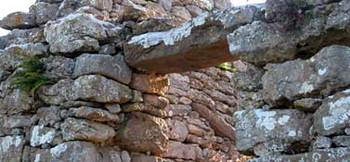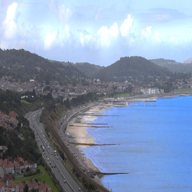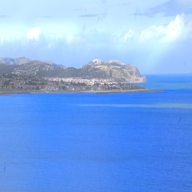Island of Choice
With over 9,000 years of human habitation, Anglesey is an ancient island with a rich history passed on from its Celtic, Viking and Medieval settlers.
The first evidence of human habitation on Anglesey dates back to the Mesolithic period at about 8,000 BC. Throughout the following millennia, the tribes occupying the Island erected numerous stone burial chambers, standing stones, and hill forts, many of which have survived the ages in good condition and are open to visitors.
During the Roman occupation of Wales in the 1st century AD, Anglesey was one of the last strongholds of the Celts and their Druid Priests.The early medieval period saw the Celtic Christian church flourish throughout Britain and Ireland. During this time, the two main monasteries were founded on Anglesey: St Cybi's at Caer Gybi (Holyhead), and St Seriol's at Penmon. Viking raids subsequently caused great destruction at these settlements as well as at the royal court in Aberffraw. However, after the end of Viking Activity in the 12th century, Anglesey flourished once again. Many of the Island's churches originated at this time, and many are well preserved and still in use today.
During the 13th century, Edward I launched two successful campaigns against Llywelyn ap Gruffydd, the last Prince of Wales. After the second defeat, Edward built his "iron ring" of castles around the coast of Wales, including Beaumaris Castle, which is a United Nations World Heritage Site, where craft fairs, plays and concerts (01248 810361) are hosted year round.
From the 18th century onwards,Anglesey became prominent for two main reasons: firstly, copper and secondly, sea access to Ireland.
Parys Mountain was a copper mining site during the Roman period and possibly much earlier. In the 1760ss full scale mining began, and at its peak was the largest copper mine in the world.
The union of Britain with Ireland in 1800 increased the need to improve the road route from London to Dublin, and Holyhead emerged the primary port for sea access, due to its proximity. Today, we are still the largest UK Irish ferry port and we are the host to cruise ships from around the world. Anglesey, today, still remains the primary gateway from Europe to Ireland.
The sea has played a large part in the shaping of Anglesey, and is known to have claimed well over 100 wrecks through the ages. You can learn about the many tales of tragedy, heroism, and lost treasure at the Maritime Museum in Holyhead or the Seawatch Centre in Moelfre.
The Oriel Ynys MÔn Anglesey Museum and Art Gallery in Llangefni houses Anglesey's major museum, where relics and artefacts from Anglesey's cultural and social past are on show in exciting exhibits that are brought to life through innovative displays. Anglesey's more recent past, such as its seafaring, mining and agricultural industries and the Island's natural history are also featured.
Further information
For more information on Anglesey's heritage and for details of the island's heritage sites and museums, please visit our heritage website (follow the link at the bottom of this page).
Interesting Facts
The first Women's Institute (WI) in Britain was started in Llanfairpwllgwyngyllgogerchwyrndrobwllllandysilliogogogoch, the Isle of Anglesey village with the longest name in Britain.
Beaumaris gaol (open to the public) has the only working tread wheel in Britain. The prison's architect was Joseph Hansom, who also designed the Hansom Cab.
Charles Dickens visited the island in 1859 to report on the loss of the Royal Charter, one of Britain's worst shipwrecks, in which 400 people perished.
Island of Choice Statistics: 51 click throughs, 2628 views since start of 2024
 Community and Culture in Llangefni Isle of Anglesey
Community and Culture in Llangefni Isle of Anglesey
News and Special Offers
-
Contact Details
phone: fax:Island of Choice
County Offices Llangefni Isle of Anglesey LL77 7TW UK

